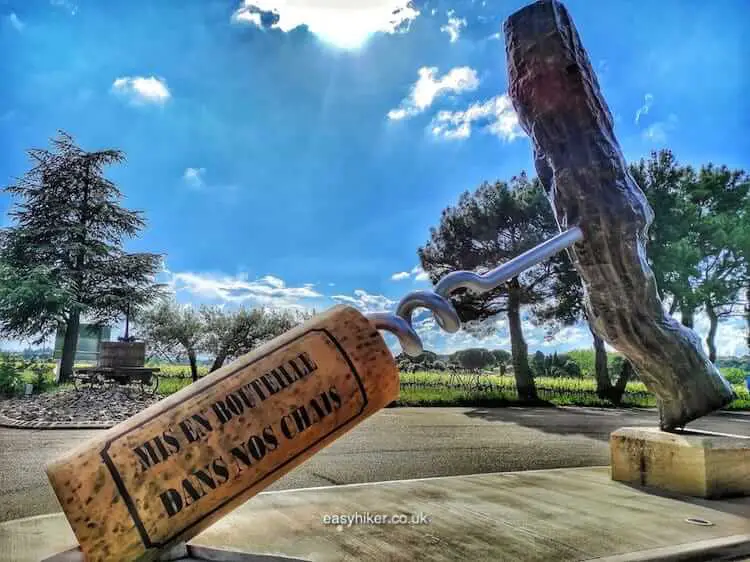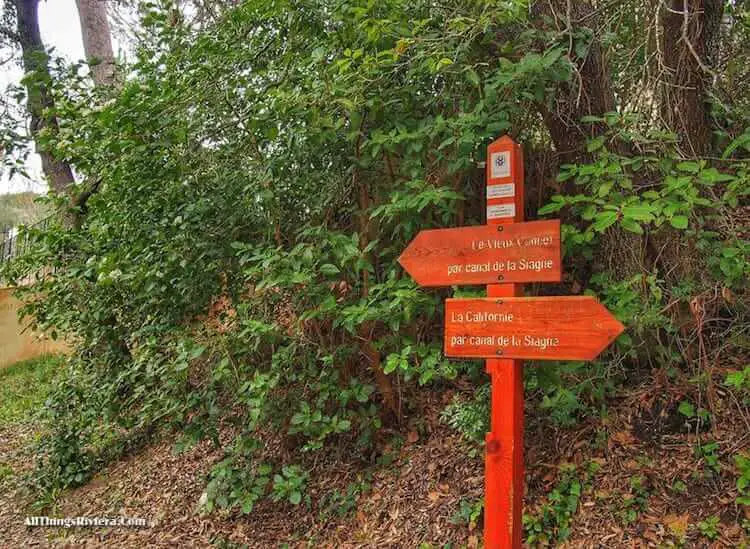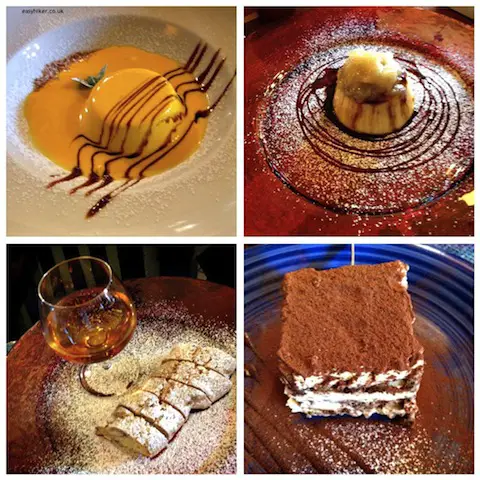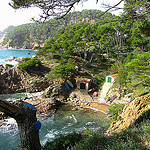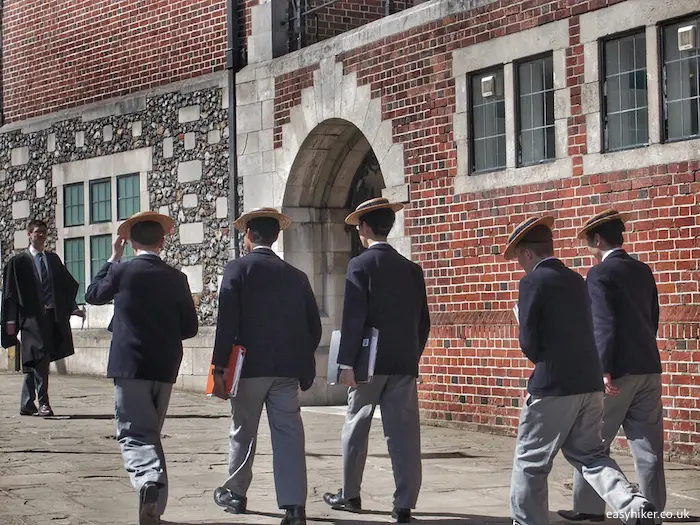In any sequence that is set in time – sequences of any length and type, from songs in a Broadway musical and dishes in a tasting menu to blog posts about a specific destination – two items are of particular importance: the first (to set the tone) and the last (to sum up).
So, for the final post in our own short sequence about villages in Provence, we are going to visit a destination that summarizes the key motifs of our journey, a destination that combines the busy and colourful street life in the provincial capital of Valreas, …

… with the visual poetry of Le Poet-Laval, …
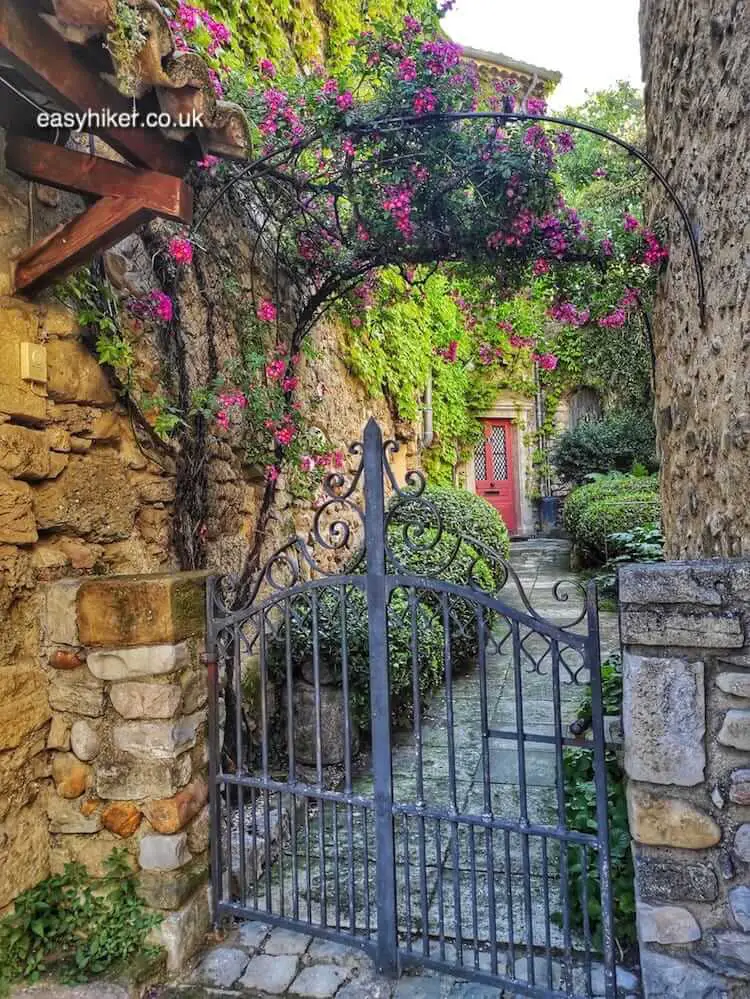
… the panoramic views from the castle of Grignan, …
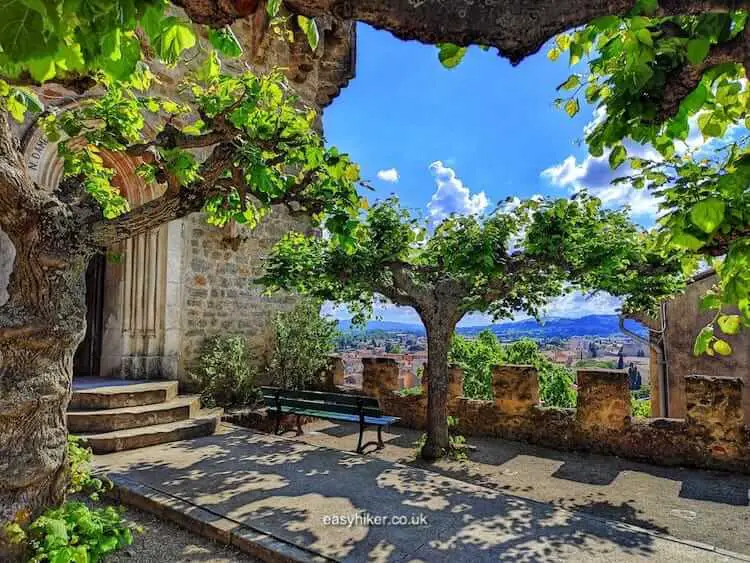
… and the Romanesque heritage of Vaison …
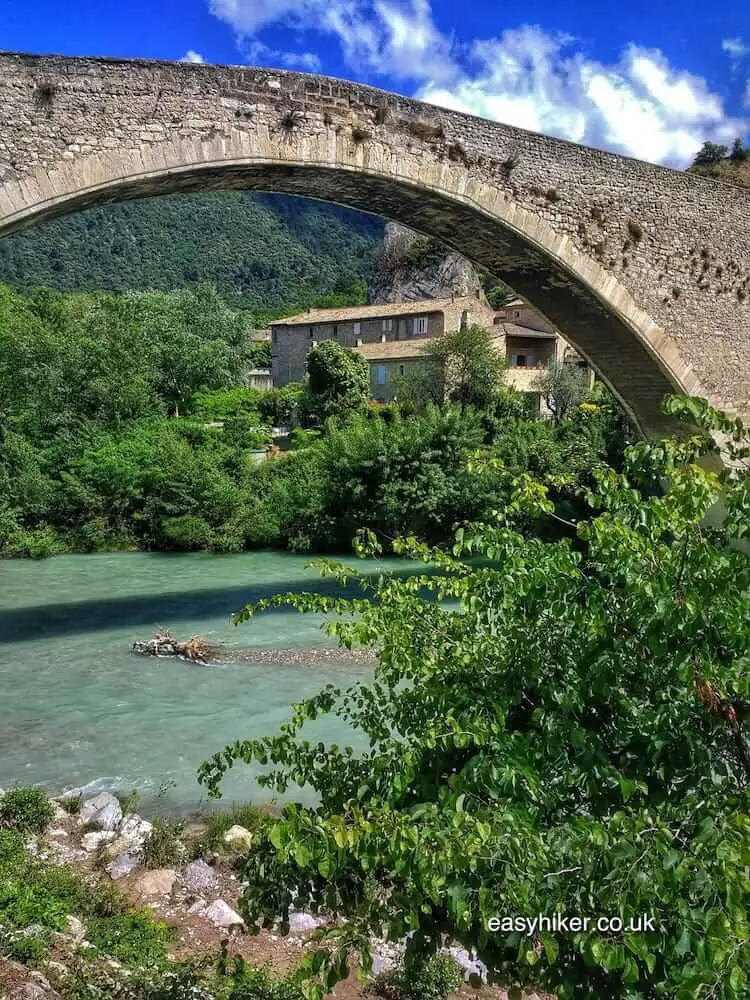
… while serving up this dish with a flavour of its own: the flavour of olives.
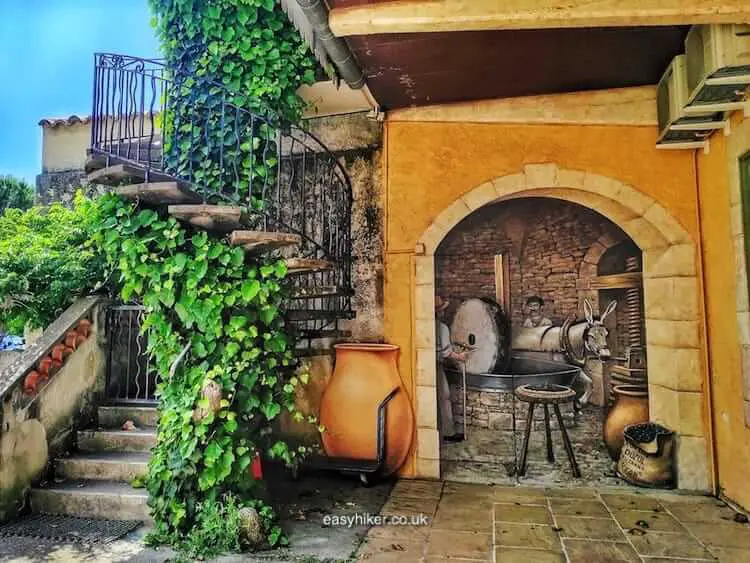
Olives, after all, are what has made the town of Nyons famous. Nyons – located in the south of the Drome department – was the first olive producer in the country to receive its own Appellation d’Origine Controlée (AOC), something that is normally reserved for more complex products such as wine and cheese.
Olives are still an important factor in the local economy, …
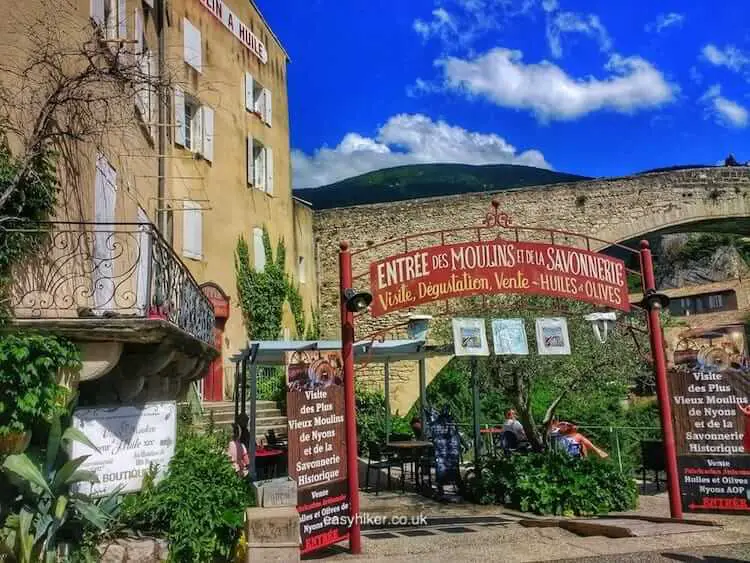
… although perhaps not in the same way as 100 years ago.
Today, olive museums and artisan oil shops have their place in the town’s tourist economy, but at the beginning of the 20th century, the region counted 1 million olive trees, a total that has shrunk to roughly 200,000 today.
Winters in Nyons can be cold – this is what gives the local olives their particular shrivelled look, but is also what caused an existential crisis of the local olive industry when thousands of trees died during a spell of late 18th century frosts.
The local growers reacted by introducing a more resilient species of tree, the Tanche, but even this hardy variety could not withstand the frost of 1 February 1956 when the temperature fell by 20° in a single night. This time, there was no way back to former production volumes.
Nyons olives are still produced (grown from newly planted trees), and a range of activities – such as the annual Olive Festival – are helping today to keep old traditions alive.
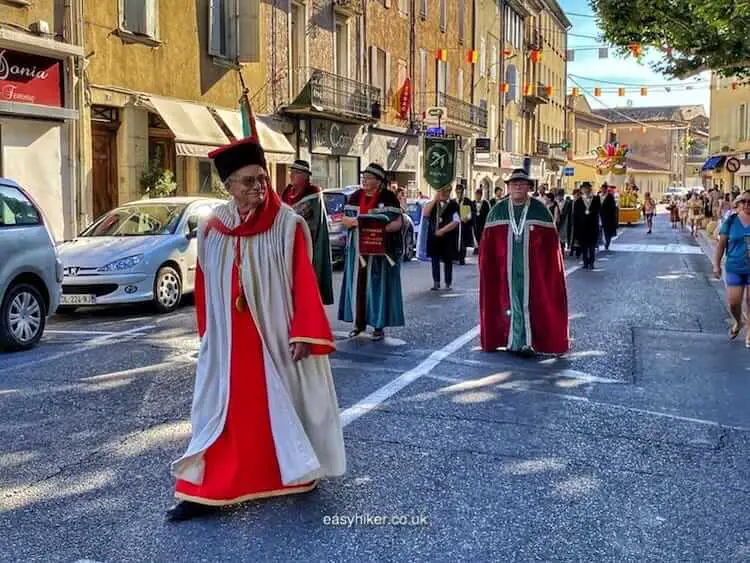
Olives, at any rate, are only one of two things that have made Nyons famous. There is also the historic Pont Roman across the Aigues river, 18 metres high and distinguished by the unique kink in its middle.
It looks as antique as the bridge in neighbouring Vaison-la-Romaine, but is Romanesque rather than the real thing and was completed in 1409.
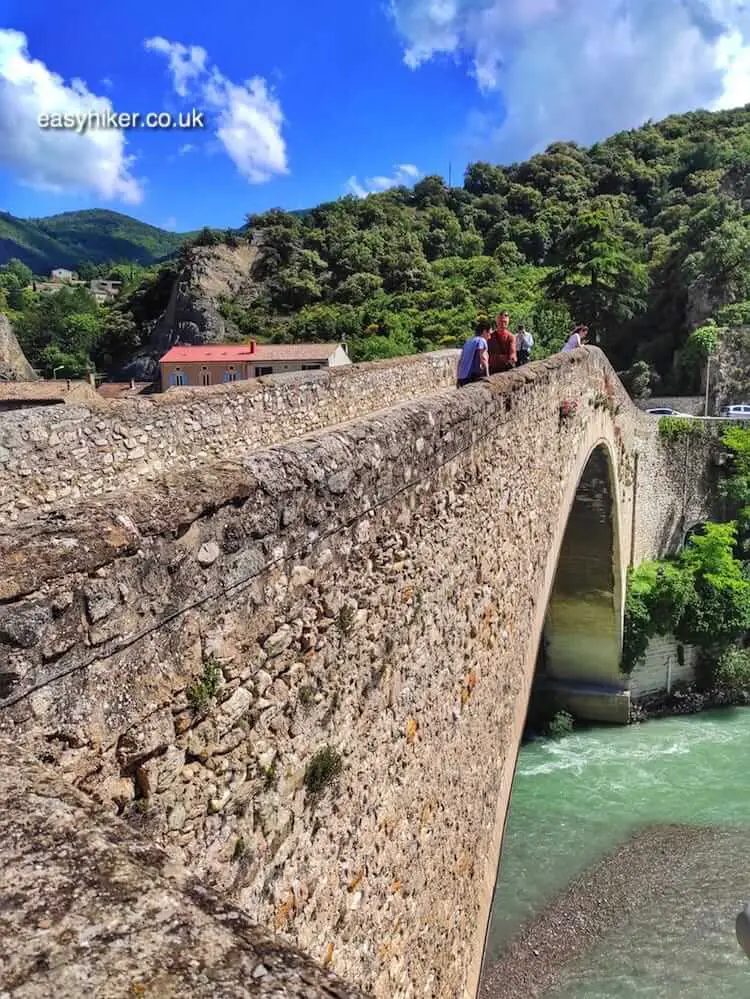
The Pont Roman is also the only building in the Drome departement whose image graces an official Post Office stamp. Eat your heart out, Grignan!
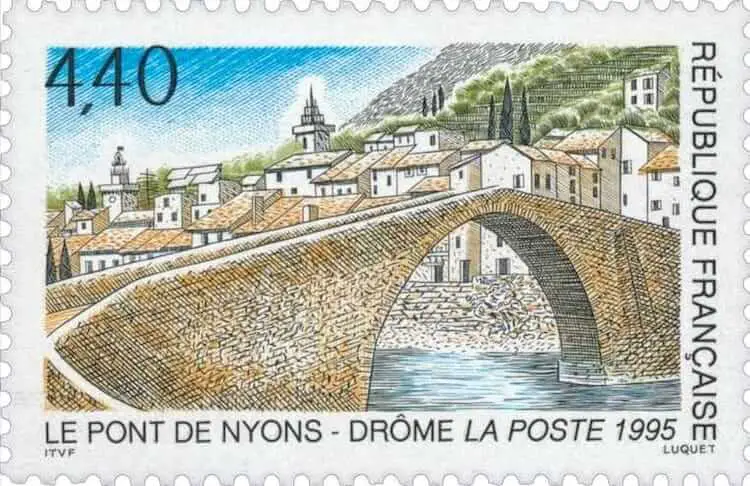
From the bridge, you get the most scenic views in town …
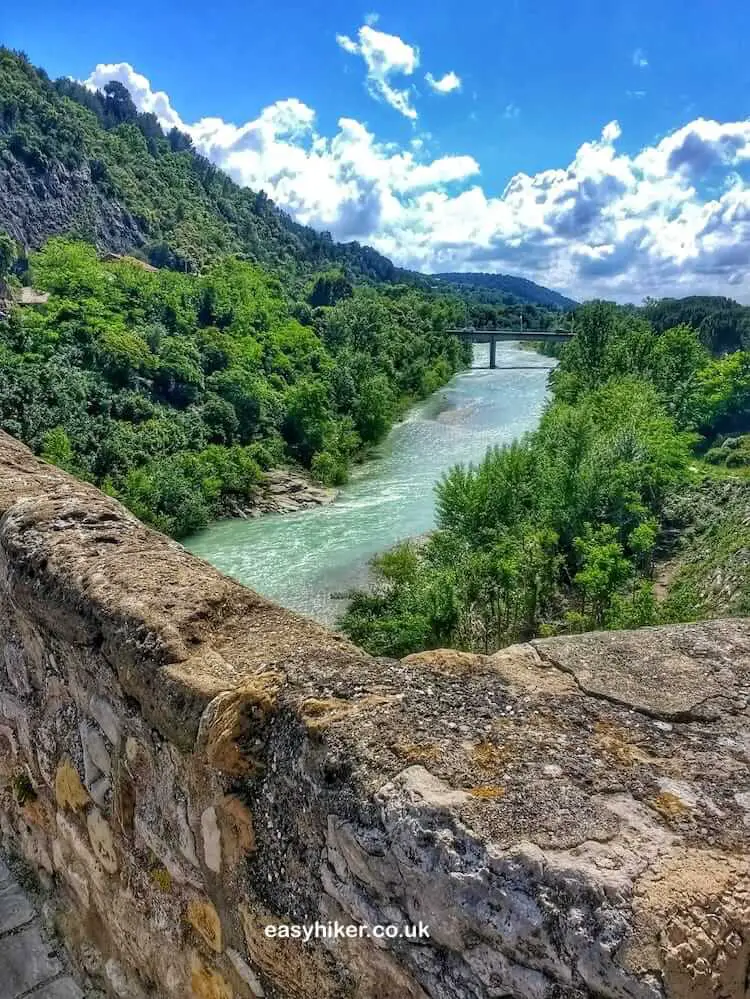
… but for the most scenic walk, you must make your way uphill to the Quartier des Forts.
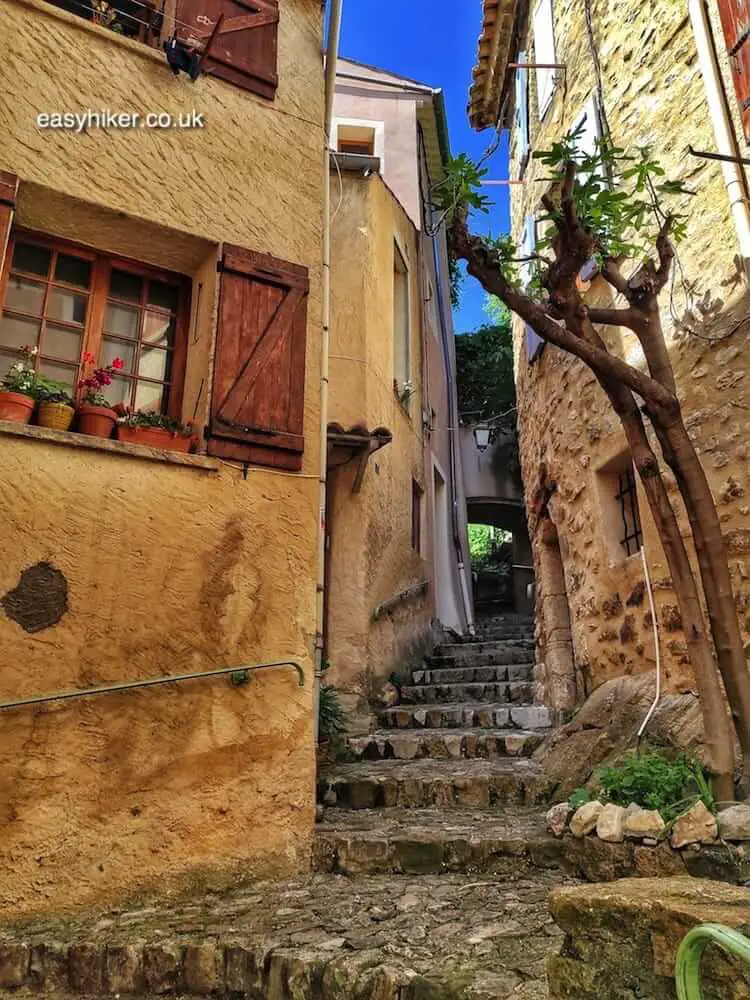
This ancient quarter is the core of medieval Nyons. It was virtually abandoned for centuries but has been lovingly restored. Walk through narrow lanes lined by ancient stone walls …

… and past scenic views …
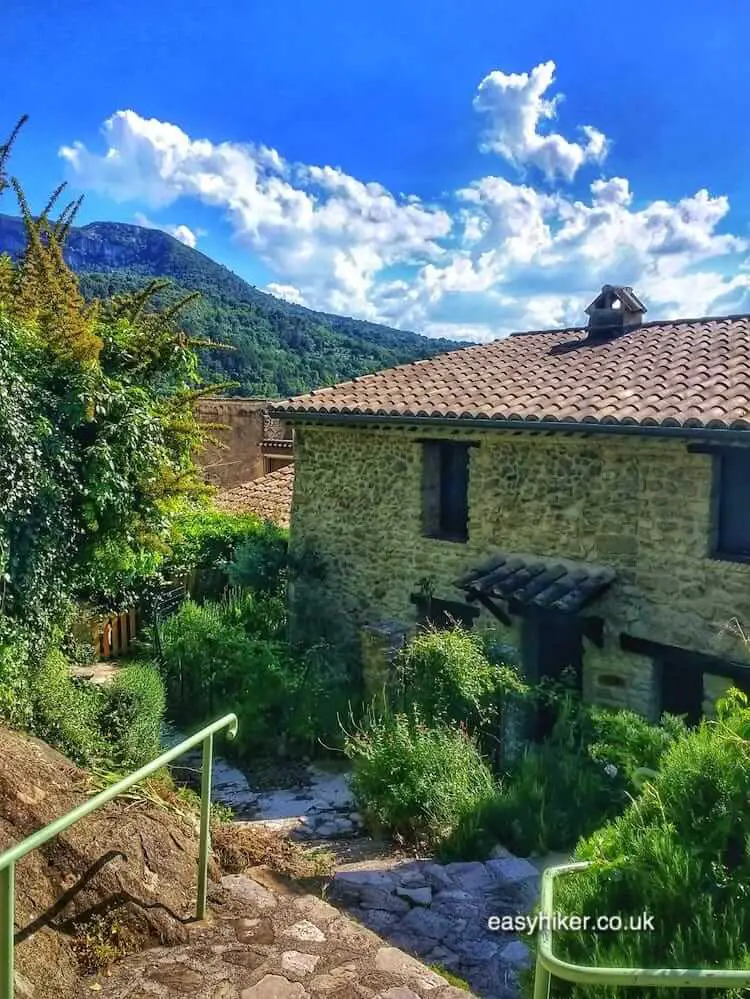
… until you reach the Tour Randonne at the town’s highest point, originally a keep and a military prison (built in 1280) that was purchased in 1862 by a local priest and converted into a church. The first mass was celebrated here by the bishop of Valence and – so the records say – attended by 15,000 believers. (I wonder how they all fitted in the quarter, never mind the chapel, which is tiny.)
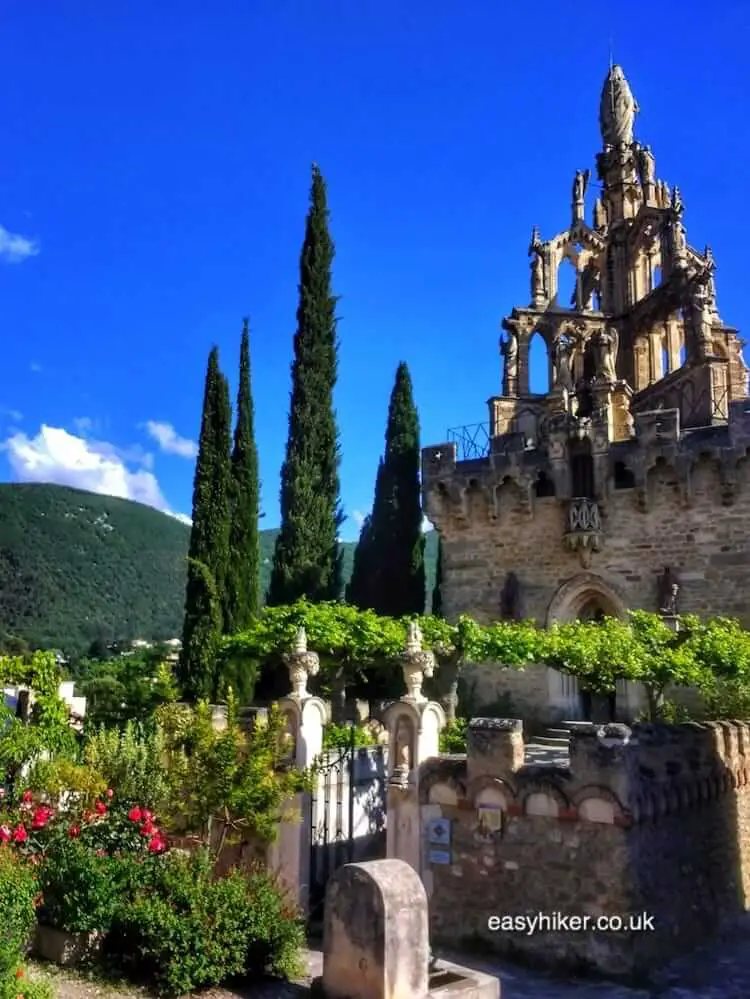
There are two more things that we need to mention in order to complete the picture of the Drome Provencal and the Enclave des Papes. First, a word about tourism.
Gallia est omnis divisa in partes tres: this is what Julius Caesar wrote in De Bello Gallico. 2000 years later, modern France is still divided into three parts, although they are not the same three. Today, we have Paris, the coast, and “flyover” or “drive-through” France – the cool, the fun, and the dreary.
But just as not all of the French coast is fun, not all of the inland areas are dreary either: provincial university towns are youthful, lively, and diverse places. It is the smaller towns and rural regions that clearly struggle. Some of these areas are picturesque, beautiful even, but they count among the losers of the social and economic trends from the last 30 years. The northern Provence, with all its magnificent landscapes and pretty small towns, belongs to this marginalized part of France.
When the young with professional ambitions and perspectives moved out, the towns they have deserted rely on visitors for their hustle and bustle. Our local friends, Marion and Jochen, had experienced one or two places on our itinerary during the last winter and were surprised how much livelier they felt in mid-May.
This is a valuable reminder that not all of the world is Tenerife and Venice – whose inhabitants are, by all accounts, heartily sick of their invading hordes of visitors. Tourists have a bad press, but in many parts of Europe, they are not only a valuable source of income but also a force for life.
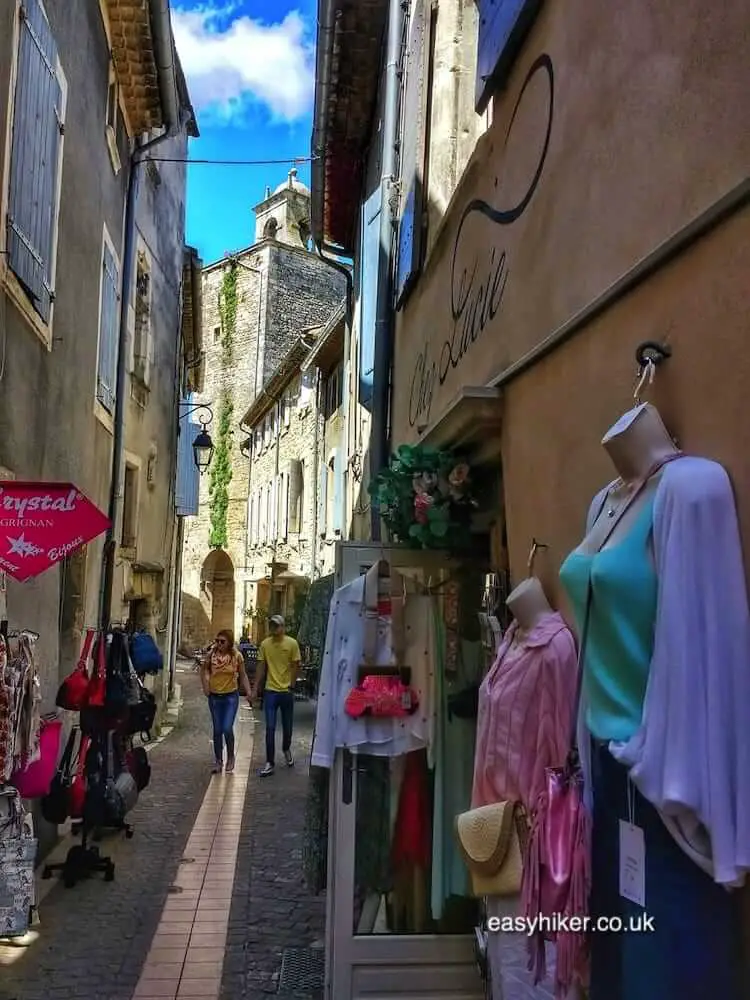
And finally, we should not leave the Provence without having mentioned the region’s main agricultural product. The Rhone Valley produces 450 million bottles of wine a year, second among the French wine only behind Bordeaux (not counting the Languedoc Roussillon, which stretches from French Catalonia to the Italian frontier and is less a useful denomination than simply another word for “The South”).
The Rhone valley produces no such thing as a grand cru classé. Most of the local wine is sold as generic Cotes du Rhone, blended together from different vineyards by negociants, but it is consistent and reliable, the classic value-for-money choice in restaurants.
Alongside tourism, wine-making is the second leg of the local economy, and where the two fall into step, you get a cave. Practically every village has one of those hypermarkets for wine.
Here is a tip: the departments of the Drome and the Vaucluse are entitled to their own sub-denomination of higher quality, the Cotes du Rhone Villages, and some towns and villages are additionally allowed to print their names on the label.
These sub-sub-denomination bottles not only make great gifts for friends and family (since you usually do not find them outside of the region), but will also provide the perfect accompaniment to a diner for yourself and your loved ones over which to reminisce about an unforgettable holiday in the Provence.
Cheers!
